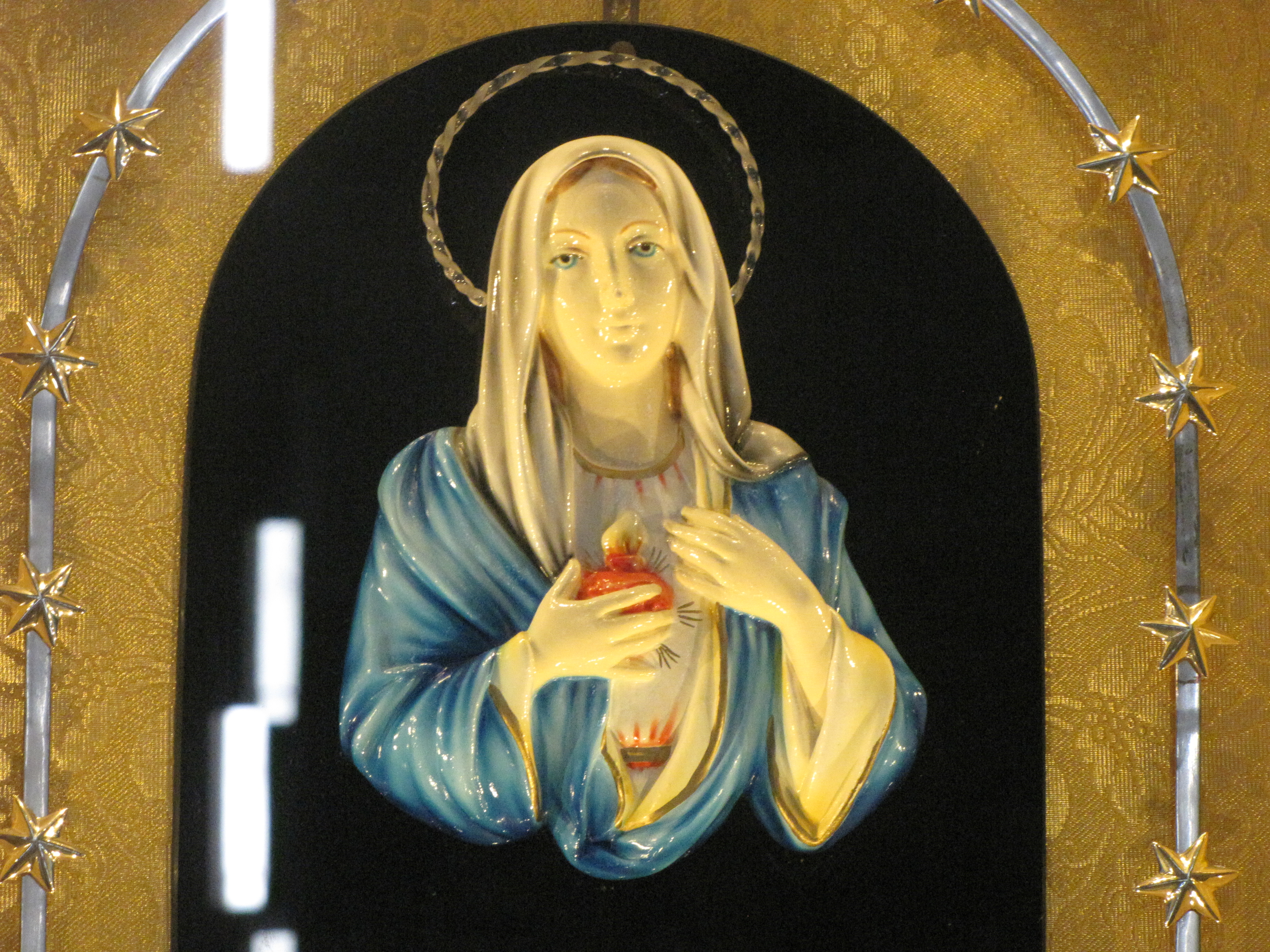Devotion to Our Lady of Tears in Syracuse: that's what happened
Antonina Giusto and Angelo Iannusco had married in March 1953 and lived in a modest workers' house, located in via degli Orti di San Giorgio n. 11 in Syracuse. Antonina became pregnant and began to experience severe pain and convulsions; he often prayed and raised litanies to implore the help of the Holy Virgin Mary. On the morning of August 29, 1953, at 8.30 am, the plaster painting depicting the Immaculate Heart of Mary Most Holy, to which the woman often addressed herself in prayer, shed human tears. The phenomenon, which was repeated several times, attracted a multitude of people who wanted to see for themselves and taste those tears. The witnesses of the miraculous event were of all ages and social conditions. The plaster picture was placed outdoors outside the apartment to give the huge mass of devotees, and even curious people, the opportunity to observe and adore it. Some people bathed cotton wool in the tearful liquid of the Madonna and brought it to their sick relatives; when this wadding was passed on the bodies of the sick there were the first miraculous healings. Signora Iannusco was among the first privileged: the convulsions and the pains stopped immediately and gave birth to a healthy and robust child. The news of the extraordinary healings spread widely and devotees from all over came to venerate this effigy of Maria SS. which in a few months became a destination for over two million pilgrims. At the same time as the narrated episode, many illustrations were also produced depicting the other similar phenomena that occurred in Calabro di Mileto and Porto Empedocle in the same year. The tear fluid was examined in the laboratory and was confirmed as authentically human. The definitive judgment of the Sicilian Episcopate was based on the fact that the reality of continuous tearing could not be ignored and that with this manifestation the Mother of God wanted to give everyone the warning to do penance. The document issued by the Sicilian Episcopate concludes as follows: «... They make vows that this manifestation of the heavenly Mother pushes everyone to do penance and more lively devotion towards the Immaculate Heart of Mary, hoping for the prompt construction of a sanctuary that perpetuates the memory of the prodigy. Palermo, December 12, 1953. • Ernesto Card. Ruffini, Archbishop of Palermo ». In turn, Pope Pius XII, after recalling the many sanctuaries of the island, strongholds of the faith of the Fathers, uttered memorable words to demonstrate on Vatican Radio, in 1954, the official position of the Church: «Certainly the Holy See has not manifested so far in no way was his judgment on the tears which were said to have flowed from an effigy of Maria SS. in a humble workers' house; however, not without keen emotion, we became aware of the unanimous declaration of the Episcopate of Sicily on the reality of that event. Without a doubt Mary is eternally happy in heaven and does not suffer pain or sadness; but she does not remain insensitive to it, on the contrary she always nourishes love and pity for the wretched human race to whom she was given for Mother, when painful and tearful she stood at the foot of the cross where the Son was hanging. Will men understand the language of those tears?
